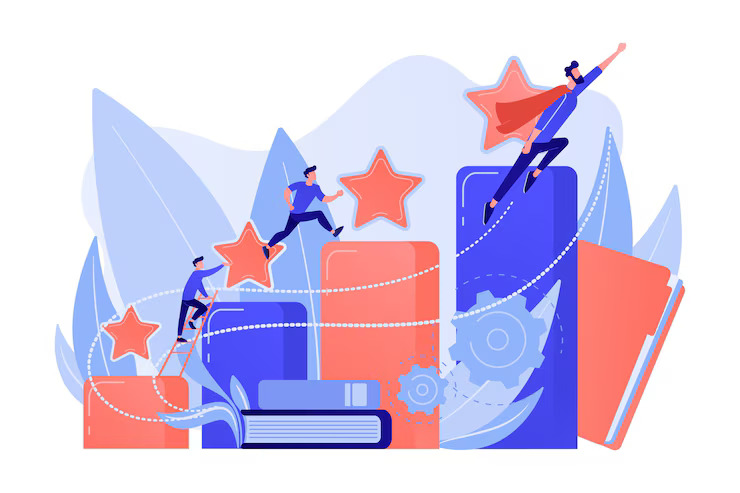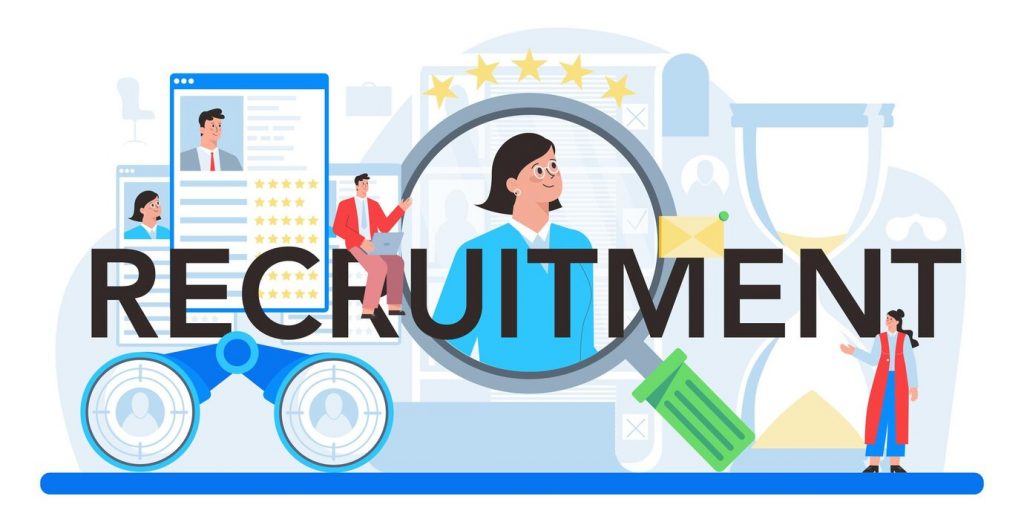Introduction
The New Currency of Growth is Talent
In a workplace disrupted by AI, hybrid models, and evolving employee expectations, talent has become the most strategic asset for business growth. Leading organizations have realized that success is no longer about merely acquiring top talent—it’s about cultivating an environment where talent thrives. That’s where Talent Leadership steps in.
Why Talent Leadership Matters More Than Ever
Talent leadership is not just an HR buzzword; it’s a transformative function that aligns people strategy with business performance. According to McKinsey, companies with strong talent leaders are 2.2x more likely to outperform their peers in revenue growth. In 2025, talent leadership success will be defined by how well companies adapt to workforce shifts, integrate technology, and invest in inclusive, future-ready teams.
The growing complexity of talent needs, from remote collaboration to generational shifts, demands a new breed of leadership that is agile, empathetic, and tech-savvy. This blog explores the strategies and responsibilities modern talent leaders must embrace in 2025. We’ll dive deep into industry data, trends, real-world practices, and platform innovations like JobTwine that are redefining how leaders engage and manage talent.
Also Read: How to Build a Candidate Success Profile: A Step-by-Step Guide
Talent Leadership Success: Understanding the Landscape
Top Trends Reshaping Talent Leadership in 2025
The talent ecosystem has shifted radically in recent years:
- 65% of HR leaders say their top priority in 2025 is upskilling current employees (Gartner, 2025).
- 92% of employees expect flexibility in work locations and hours (LinkedIn Workforce Report, 2025).
- The rise of AI is expected to eliminate 85 million jobs but create 97 million new ones by 2025 (World Economic Forum).
With automation reshaping job functions and employees demanding purpose-driven work, talent leaders must be more proactive than reactive. The traditional annual performance review is dead. In its place are real-time feedback systems, development-centric check-ins, and continuous capability building.
The increased focus on employee experience means that every touchpoint, from interviews to offboarding, must be designed to reflect empathy and clarity. Platforms like JobTwine allow organizations to map these experiences and optimize them using real-time analytics.
Also Read: Candidate Experience Statistics 2025: Insights to Improve Hiring Success
Technology as a Talent Enabler
AI-powered platforms like JobTwine now empower leaders with intelligent interview insights, structured hiring playbooks, and talent performance predictions. The shift from manual to data-driven decision-making has transformed hiring from a gamble to a science.
Platforms like JobTwine reduce human interview time by up to 70% by automating:
- Interview design and scheduling
- AI-led candidate evaluations
- Auto-debrief reporting
- Real-time feedback transcription and tagging
This isn’t automation for the sake of speed—it’s scalable intelligence that removes bias and enhances decision quality. It also empowers hiring teams to focus on what truly matters—creating great candidate experiences and building strong teams.
Remote & Hybrid Work: A Permanent Fixture
According to Owl Labs, 60% of employees in 2025 prefer a hybrid model. This requires talent leaders to manage distributed teams, build virtual culture, and create unified engagement strategies regardless of geography.
Virtual onboarding, asynchronous collaboration, and digital engagement metrics are now must-haves. Leaders who embrace flexibility without compromising on productivity will win the war for talent.
Also Read: Recruitment Agency vs. RPO: Which Hiring Solution Is Right for You?
Key Strategies for Talent Leadership in 2025
Championing Diversity and Inclusion
Organizations with inclusive leadership are 1.8x more likely to be innovation leaders (Deloitte, 2024). Talent leaders must move beyond representation metrics to embed inclusion into:
- Hiring scorecards
- Team collaboration tools
- Performance reviews
- Leadership pipelines
A diverse organization isn’t just ethically sound—it’s a strategic advantage. Diverse teams solve problems faster and understand broader customer demographics. Inclusion, however, is the lever that unlocks this power.
Action Tip: Use platforms like JobTwine to track interview bias, measure language inclusivity, and ensure objective evaluation via AI-based assessments.
Also Read: Top 5 AI Interview Copilot Software in 2025 for Smarter Hiring
Building a Culture of Continuous Learning
Skills now have a half-life of just 2.5 years (IBM, 2024). Talent leaders must turn their organizations into learning engines. In a skills-based economy, those who don’t learn fast are left behind.
- 74% of employees say they would leave their job for more development opportunities (LinkedIn, 2025).
- High-performing companies spend 2.6x more on learning per employee (Bersin & Deloitte, 2025).
The best learning strategies are embedded in daily workflows. Learning should be personalized, accessible, and incentivized. Microlearning, reverse mentoring, and internal certifications are rising trends that leaders must champion.
Data-Driven Talent Decisions
Talent leaders are no longer just “people managers”—they’re expected to be strategic analysts. Companies using people analytics are:
- 5x more likely to make faster talent decisions
- 2x more likely to improve leadership pipelines (Visier, 2024)
From predicting high performers to optimizing workforce planning, data is the key. Talent dashboards, attrition heatmaps, and engagement pulse scores provide leaders with granular insights.
Also Read: Salary History in Hiring: Why Companies Ask & Should It Matter?
Modern Data Applications Include:
- Attrition prediction models
- Hiring funnel performance
- Engagement heatmaps
- Candidate experience dashboards (via tools like JobTwine)
Strengthening Employer Branding
In a world where 73% of candidates research a company’s Glassdoor before applying, employer branding is a talent leader’s secret weapon.
A strong brand attracts top talent, reduces cost-per-hire, and boosts retention. It’s not just about flashy career pages—it’s about authentic storytelling, transparent leadership, and consistent candidate experiences.
Top Branding Strategies Include:
- Showcasing employee stories
- Streamlining interview experiences
- Creating standout onboarding journeys
- Using AI tools like JobTwine to deliver transparent hiring feedback
Also Read: Best Interview as a Service Platforms in 2025: Top 5 Solutions for Smarter Hiring
Responsibilities of Talent Management Leaders
Architecting Talent Development Programs
Great leaders build programs, not just pipelines. Talent development must be:
- Outcome-focused
- Personalized to roles
- Aligned with company OKRs
Case Study: Salesforce launched a “Futureforce” initiative where every employee receives a quarterly personalized development plan—resulting in 23% higher internal mobility in 2024.
By democratizing access to development and tracking progress transparently, they created a culture of ownership and growth.
Ensuring Engagement & Retention
Retention is no longer a passive metric—it’s an active strategy. Talent leaders must curate experiences that make employees stay.
Retention Levers Include:
- Mentorship frameworks
- Recognition systems
- Transparent career pathways
- Continuous feedback loops via pulse surveys and tools like JobTwine
Engaged employees are 87% less likely to leave their organization (Gallup, 2024). Engagement is not just about perks—it’s about purpose, autonomy, and belonging.
Also Read: Hiring for Sales & Marketing: How AI Speeds Up Candidate Selection
Aligning People Strategy with Business Goals
Only 41% of HR leaders believe their people strategy is aligned with organizational growth (Gartner, 2024). Talent leaders must build bridges between hiring outcomes and business KPIs.
They must think like business leaders, not just HR custodians. This means understanding product timelines, customer expectations, and market shifts.
Strategic Practices:
- Use OKRs to map talent initiatives
- Connect skill development with product roadmaps
- Regularly audit roles using Candidate Success Profiles (built via JobTwine)
Navigating Talent Transitions
With AI and automation altering job definitions, talent leaders must excel in change management. This includes redeploying talent, sunsetting obsolete roles, and introducing future-ready ones.
Success Checklist for Talent Transitions:
- Identify high-risk skill gaps early
- Re-skill internal talent proactively
- Leverage internal mobility platforms
- Foster transparent conversations about role evolution
Change is hard, but silence is costlier. Leaders who manage transitions with empathy, clarity, and data will build trust and resilience.
Also Read: Proxy Interview: How to Detect and Prevent Fraud in Hiring
Conclusion:
Lead with Purpose, Powered by Insight
The role of the talent leader in 2025 is both broader and deeper than ever before. It’s about driving organizational agility through human potential, not just filling roles.
Success demands a commitment to:
- People-first strategy
- Technology-enabled execution
- Data-informed decisions
- Continuous innovation
Platforms like JobTwine are not just enablers—they are force multipliers that ensure structured hiring, candidate intelligence, and scalable leadership impact.
Talent leadership is no longer a back-office function. It’s now at the boardroom table—driving growth, navigating change, and shaping the future of work.
Also Read: How to Use AI for Candidate Sourcing and Shortlisting
FAQs: Talent Leadership Success
What is the difference between talent leadership and traditional HR?
Talent leadership is strategic and future-oriented, focusing on aligning talent with business goals, while traditional HR is often administrative and compliance-focused.
How can technology help talent leaders succeed in 2025?
AI tools like JobTwine automate interviews, analyze candidate fit, and reduce hiring time by over 70%, giving leaders real-time insights and freeing up time for strategy.
What KPIs should talent leaders track?
Key KPIs include time-to-fill, quality of hire, internal mobility rate, candidate NPS, learning adoption rate, and engagement scores.
How can leaders build a culture of continuous learning?
Offer personalized learning paths, incentivize skill development, integrate training with career growth, and use role-based upskilling metrics.
What’s the best way to improve remote team engagement?
Adopt asynchronous tools, increase recognition moments, establish transparent goals, and use feedback loops powered by AI insights.




